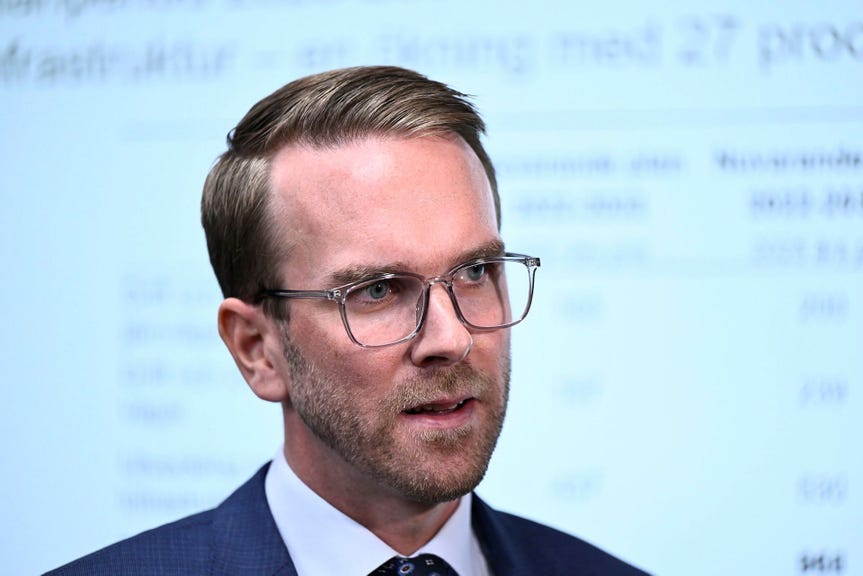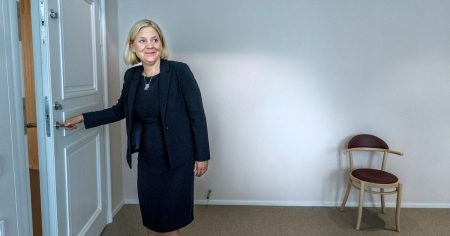The future of Bromma Stockholm Airport hangs in the balance as its primary tenant, the airline BRA, prepares to relocate its domestic operations to Arlanda Airport at the start of the new year. This shift will significantly impact the airport’s owner, Swedavia, leading to substantial revenue losses and prompting an increase in passenger fees across its airports, ultimately affecting ticket prices for travelers.
Swedavia’s CEO, Jonas Abrahamsson, has publicly urged the Swedish government to expedite its decision regarding Bromma Airport’s future. He argues that without a clear directive to decommission the airport, Swedavia’s financial stability is threatened, potentially jeopardizing critical investments in other airports across the country. The revenue shortfall caused by BRA’s departure necessitates higher passenger fees, a move Abrahamsson hopes to mitigate with a swift government decision. This plea underscores the precarious position of Bromma Airport and the wider implications for Swedavia’s operations.
However, the government, particularly Infrastructure Minister Andreas Carlson, remains steadfast in its commitment to maintaining Bromma Airport’s operations throughout its current term, adhering to the Tidö Agreement. Carlson emphasizes the importance of avoiding hasty decisions regarding critical infrastructure and advocates for a comprehensive, long-term analysis of the situation. He highlights the government’s investments in the aviation sector, such as the removal of the flight tax and the provision of support for regional airports, expressing optimism about the potential resurgence of domestic air travel and its compatibility with environmental concerns due to ongoing industry advancements. Carlson’s stance highlights the government’s commitment to preserving existing infrastructure and its belief in the long-term viability of Bromma Airport.
The conflicting perspectives between Swedavia and the government highlight the complexities surrounding Bromma Airport’s future. With BRA’s departure, only one regular route, connecting Trollhättan-Vänersborg to Stockholm, will remain operational at Bromma. While Swedavia forecasts a rise in international traffic, it anticipates domestic travel to remain stagnant. Carlson, echoing arguments from the Sweden Democrats, also cites the importance of Bromma for emergency preparedness and national security, despite its exclusion from the government’s list of 27 designated emergency airports for 2025. This raises questions about the justification for subsidizing a potentially underutilized airport. Carlson acknowledges these concerns but defers a definitive answer pending the completion of the government’s analysis of the situation.
In contrast, the Social Democrats advocate for the immediate closure of Bromma Airport, arguing that maintaining its operations constitutes a wasteful expenditure of taxpayer money. Gunilla Svantorp, the party’s transport policy spokesperson, criticizes the government’s inaction, accusing them of blindly adhering to the Tidö Agreement without genuinely addressing the airport’s financial viability. Svantorp acknowledges the potential difficulty of reconstructing the airport if needed in the future, but emphasizes the proximity of Arlanda Airport as a viable alternative, especially given Bromma’s location within a major metropolitan area with access to alternative transportation infrastructure. This counterargument highlights the political divide regarding Bromma’s future and the differing priorities between maintaining existing infrastructure and ensuring efficient allocation of public resources.
Further adding to the chorus of voices calling for Bromma’s closure is the Green Party’s Linus Lakso, who emphasizes the potential of the land for housing development. Lakso points out Swedavia’s willingness to relinquish the land and urges the government to recognize the untenable nature of continuing to support a financially struggling airport. He has formally requested a parliamentary debate with Minister Carlson to address this issue. This adds another layer to the debate, highlighting the potential alternative uses for the land currently occupied by the airport and the pressing need for housing in the Stockholm area. The confluence of economic, environmental, and logistical considerations surrounding Bromma Airport’s future makes it a complex issue with no easy solutions. The conflicting viewpoints from various stakeholders highlight the need for a thorough and transparent assessment of the situation before any definitive decisions are made.














